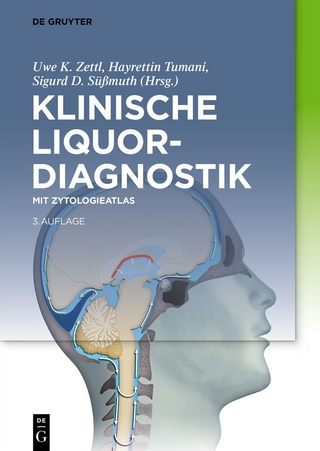
The Common Marmoset in Captivity and Biomedical Research
Academic Press Inc (Verlag)
978-0-12-811829-0 (ISBN)
Marmosets are currently being used in diverse areas of inquiry, including vision and auditory research, infectious disease, cognitive neuroscience, behavior, reproductive biology, toxicology and drug development, and aging. The marmoset genome has been sequenced and there is currently an intensive effort to apply gene editing technologies to the species. The creation of transgenic marmosets will provide researchers with a small nonhuman primate model to study a number of poorly understood disorders, like autism.
Robert P. Marini, DVM, DACLAM, Assistant Director, is a member of MIT’s Division of Comparative Medicine’s clinical staff and is Chief of the Division’s clinical surgical facilities. Dr. Marini is responsible for coordinating and supervising all major survival surgery in non-rodent mammalian species. Harvard Medical School, Boston MA USA Suzette D. Tardif, Ph.D., is the Associate Director of Research at the Southwest National Primate Research Center. She is an adjunct faculty of The Barshop Institute. The Tardif laboratory's activities center on the development of the marmoset monkey as a disease model. Dr. Tardiff is a past-President of the American Society of Primatologists. Keith Mansfield is Associate Director for Resource and Collaborative Affairs and Chair, Division of Primate Resources, New England National Primate Research Center, Harvard Medical School, Harvard University, Southborough, US. His research focuses on primarily on the recognition of spontaneously occurring infectious diseases of nonhuman primates and their development into novel animal models to investigate disease pathogenesis. Prof. Fox obtained his Master of Science degree in Medical Microbiology at Stanford University and a Doctor in Veterinary Medicine at Colorado State University, Fort Collins. Dr. Fox is an Adjunct Professor at Tufts University School of Veterinary Medicine and the University of Pennsylvania, School of Veterinary Medicine. He is a Diplomate and a past president of the American College of Laboratory Animal Medicine, past president of the Massachusetts Society of Medical Research, past chairman of AAALAC Council, and past chairman of the NCCR/NIH Comparative Medicine Study Section. He also is an elected fellow of the Infectious Disease Society of America. In 2004 Professor Fox was elected to the Institute of Medicine of the National Academy of Sciences.
Section I: BIOLOGY AND MANAGEMENT 1. Taxonomy and Natural History 2. The Anatomy of the Common Marmoset 3. Neuroanatomy of the Marmoset 4. Marmoset Nutrition and Dietary Husbandry 5. Husbandry and Housing of Common Marmosets 6. Normal Clinical and Biological Parameters of the Common Marmoset (Callithrix jacchus) 7. Behavior and Behavioral Management 8. Reproduction, Growth, and Development 9. Regulatory Considerations
Section II: DISEASES AND CLINICAL APPLICATIONS 10. Physical Examination, Diagnosis, and Common Clinical Procedures 11. Anesthesia and Common Surgical Procedures 12. Diseases of the Urogenital System 13. Diseases of the Gastrointestinal System 14. Bone, Muscle, and Skeletal Disease 15. Viral Diseases of Common Marmosets 16. Bacterial Diseases 17. Parasitic Diseases 18. Neoplastic Diseases
Section III: RESEARCH AND APPLICATIONS 19. The Genome of the Common Marmoset 20. Creating Genetically Modified Marmosets 21. Marmosets in Aging Research 22. The Marmoset Monkey as a Model for Visual Neuroscience 23. Marmosets in Neurologic Disease Research: Parkinson’s Disease 24. Experimental Autoimmune Encephalomyelitis in the Marmoset as a Translational Model for Multiple Sclerosis 25. Marmosets in Auditory Research 26. The Marmoset as a Model in Behavioral Neuroscience and Psychiatric Research 27. The Use of the Marmoset in Toxicity Testing and Nonclinical Safety Assessment Studies 28. Experimental Infections of the Common Marmoset (Callithrix jacchus) 29. Insights Gained from Marmoset Endocrine Research
| Erscheinungsdatum | 23.11.2018 |
|---|---|
| Reihe/Serie | American College of Laboratory Animal Medicine |
| Verlagsort | San Diego |
| Sprache | englisch |
| Maße | 216 x 276 mm |
| Gewicht | 1740 g |
| Themenwelt | Medizin / Pharmazie ► Medizinische Fachgebiete ► Laboratoriumsmedizin |
| Naturwissenschaften ► Biologie ► Allgemeines / Lexika | |
| ISBN-10 | 0-12-811829-6 / 0128118296 |
| ISBN-13 | 978-0-12-811829-0 / 9780128118290 |
| Zustand | Neuware |
| Haben Sie eine Frage zum Produkt? |
aus dem Bereich


